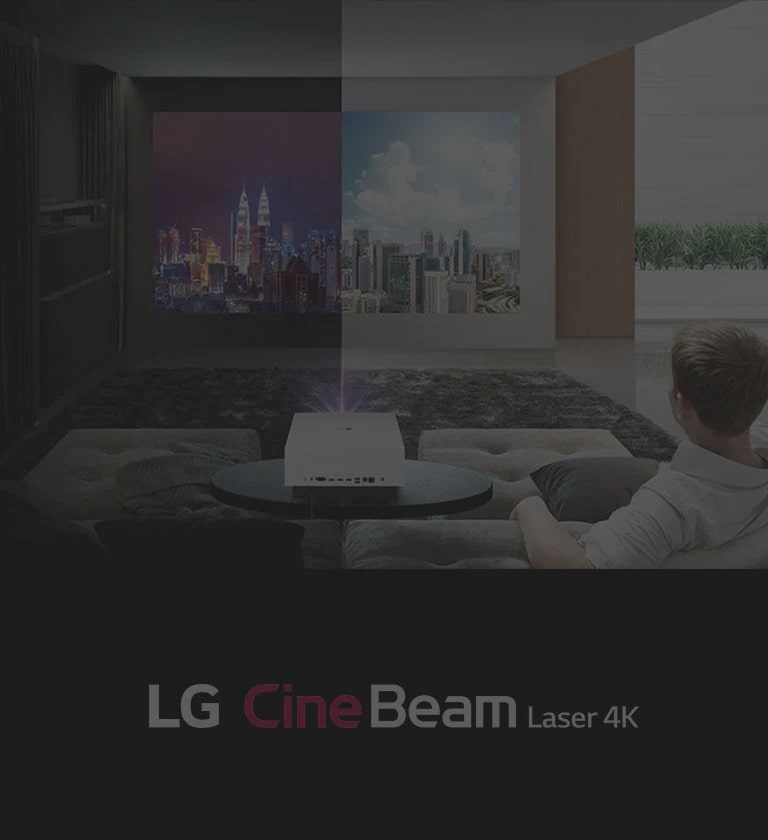We use cookies, including cookies from third parties, to enhance your user experience and the effectiveness of our marketing activities. These cookies are performance, analytics and advertising cookies, please see our Privacy and Cookie policy for further information. If you agree to all of our cookies select “Accept all” or select “Cookie Settings” to see which cookies we use and choose which ones you would like to accept.
With so many consumer items nowadays, choosing a projector can be a stroll in the park when you have all the right information and knowledge. There are countless choices available in the market when it comes to projectors; you just need to pay attention to your needs and requirements to make the best buy.
What is a projector?
The best way to explain what a projector is – an inverted camera, spitting light out of a lens rather than receiving it. The two main types of projectors are:
• DLP projectors: These projectors employ a light source in combination with a color wheel and a chip that contains microscopic tilting mirrors. The light passes through the color wheel, reflecting off the mirrors, and is further projected onto the screen.
• LCD projectors: These projectors utilize a light source that passes light through 3 LCD Chips (which are the primary colors green, red, and blue) to create and project images.

How to know which projector to buy?
For Home Theater
If you are looking for a projector to enjoy the best movie-watching experience, then instead of buying a commercial projector, go for a home theatre projector. The home theatre projector delivers the user with incredible image quality with rich saturation, high contrast and deep blacks. These projectors work best in a room where the amount of light entering can be controlled. Choose a projector with 4K resolution, offering you HDR compatibility and high contrast ratio. With high contrast ratio, you can experience a sharper picture quality be it numbers, pictures, text, graphs, or video.
Read More: ADVANTAGES OF USING PROJECTORS FOR HOME ENTERTAINMENT
For Office
Commercial projectors or projectors for offices are primarily for displaying static images, like graphs and PowerPoint slides, but they can also work great for multimedia and entertainment use. For office projectors, the main thing to keep in mind is the lumen output. For office purposes, you can either choose a short-throw projector or a regular projector.
For Gaming
If your main purpose is playing games on a big screen, then a gaming projector is your thing. The three important aspects to keep in mind when buying a gaming projector are refresh rate, lag time and resolution. If your gaming console is 4K resolution, then buy a projector that is 4K to enjoy the best graphics.
For Classrooms
Having projectors in classrooms can make the whole learning process lot of engaging and super fun. Classroom projectors have the same features as the commercial projector but utilize low resolution. Buy projectors that have built-in speakers as it makes the whole presentation process in a school easy.
ALSO READ: LG UNVEILS ULTRA-PORTABLE LED PROJECTOR HW300G
Things to keep in mind when buying a projector
Light Source
Without proper lighting, a projector cannot display a bright image. If the lighting is low, the image would be soft and blurry, even if it’s in a dark room. To know about the brightness and lighting, check the lumens rating. The lumens rating lets you know the amount of light a projector can put out. Projectors with 1,000 ANSI Lumens or greater have adequate brightness for home theatre use.
Display Resolution
Display Resolution is a very important aspect. Both DLP and LCD projectors come with a fixed number of pixels. If most of the thing you will view from a projector is HD, then try to buy a projector with high pixels. A pixel count of 1024×768 is sufficient for DVD. 720p HDTV signals require a 1280×720 pixel count for the display, while a 1080i HDTV input signal needs a pixel count of 1920×1080.
Contrast Ratio
Contrast ratio and brightness go hand in hand. Contrast basically refers to the ratio between the black and white portions of an image. High contrast ratio delivers whiter whites and blacker blacks. Even if you have a projector with an amazing lumens rating, but the contrast ratio is low, your image will look completely washed out. A contrast ratio of at least 1500:1 is good, but 2,000:1 or higher would be an excellent option.
Color Reproduction
Color reproduction is one more important factor to be considered. How colors appear in the darkest and brightest area of the image is also important to get the best output from your projector. Check out the color depth and natural tones of the projector.
Inputs
Always ensure that your projector has all the inputs that you need. The most common inputs in a projector are HDMI, VGA and DVI. When shopping for a projector, it is very important for one to make sure that it has all the input connections you need.
Portability
Portability is very important not just for moving and travelling purposes but also while installing and setting up. If the projector is portable, you can watch anything anywhere you like, even on a plain white bedsheet.
Keeping the above tips in mind, you can purchase the best projector. LG projectors are the best for cinematic viewing with ultra-vivid image quality. Portable, wireless and 3D compatible, they’re both convenient and entertaining for all your purposes.
#homeaudio
